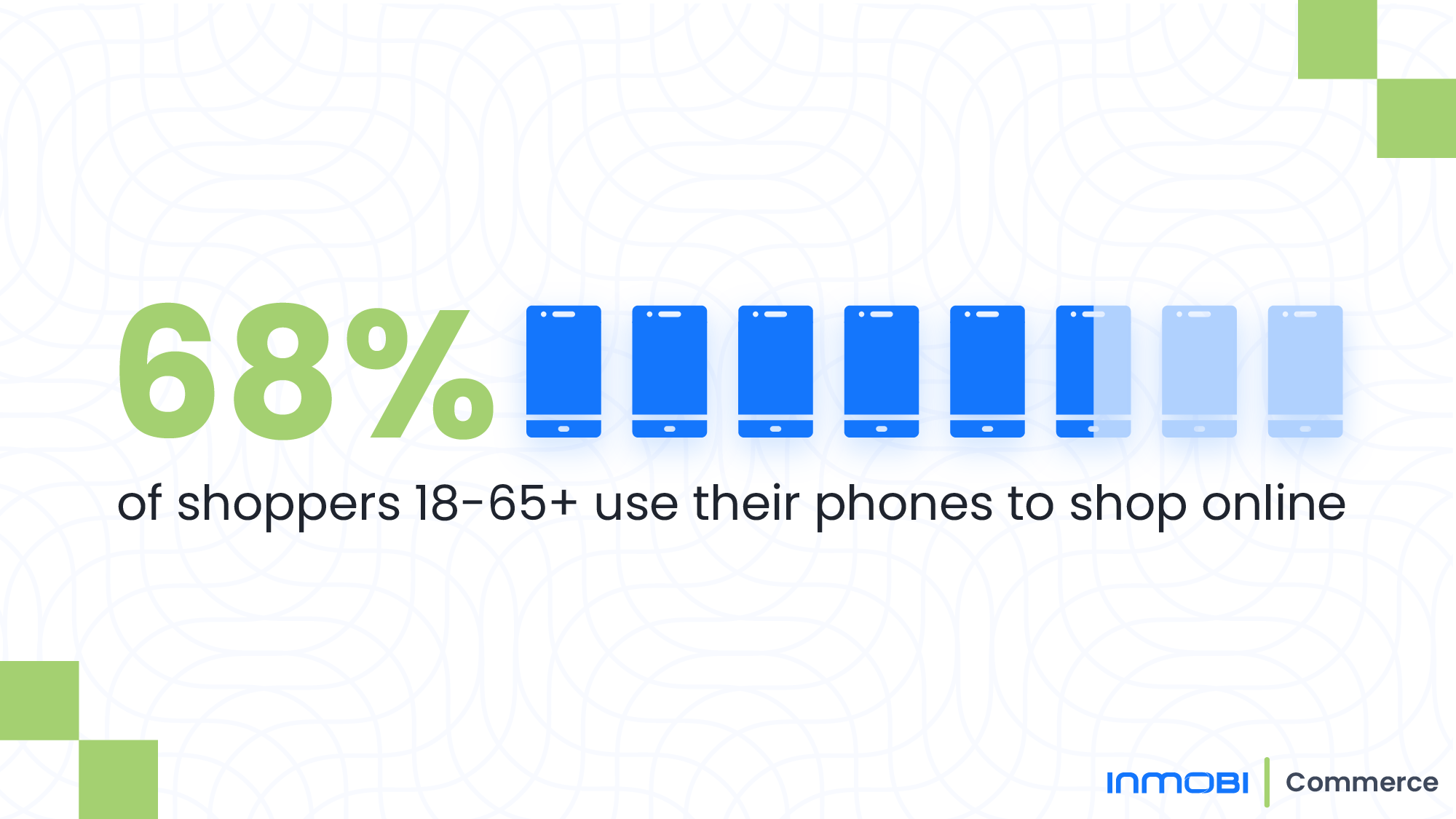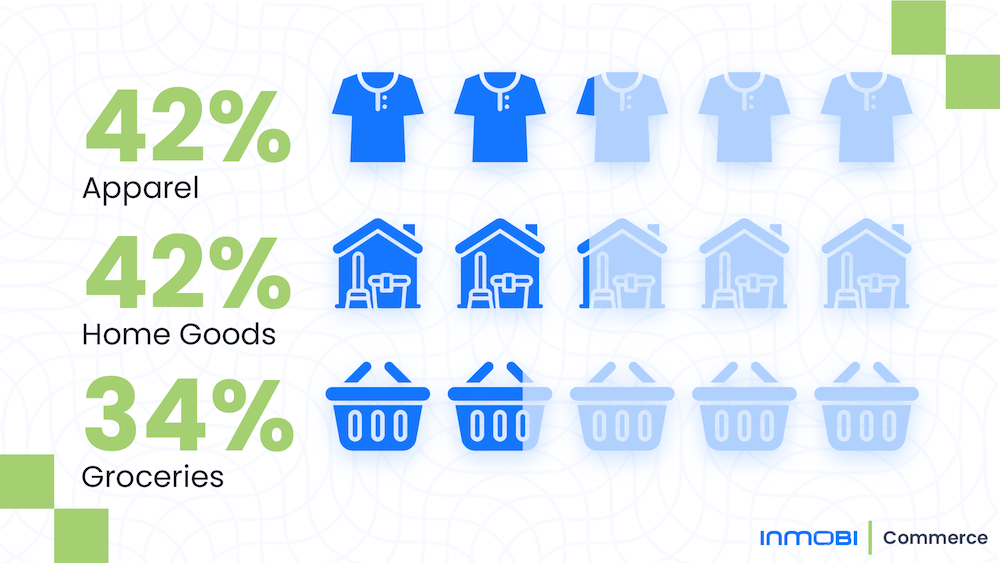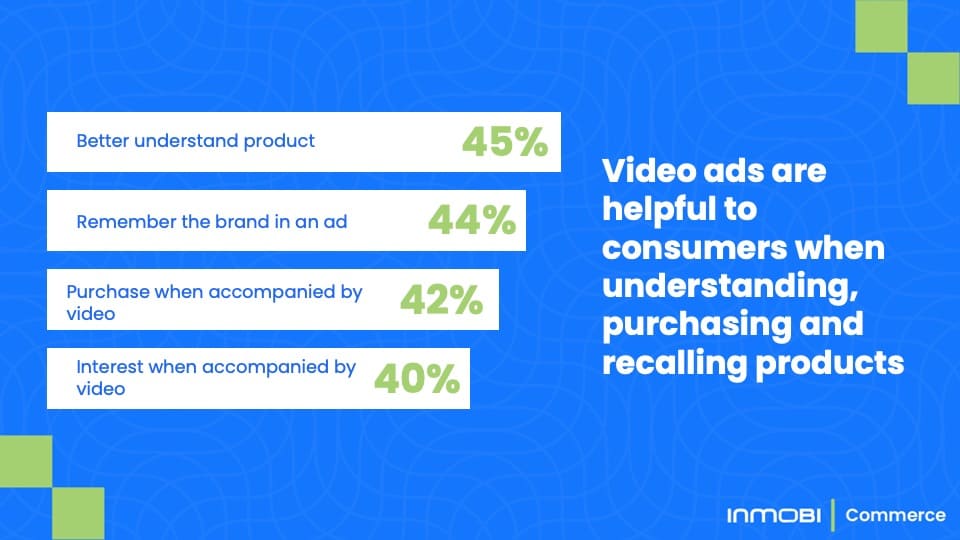- For Advertisers
-
For Publishers
- For Retail Media
- For Telcos
- Our Consumers
- Resources
- GET STARTED
-
Login Login

The ongoing pandemic has accelerated retail e-commerce sales and with that, retail media. Since 2019, e-commerce sales have experienced double-digit growth. According to eMarketer’s latest projections, e-commerce sales will surpass $1 trillion in 2022 and make up over 20% of total retail sales by 2024. Alongside e-commerce, retail media advertising is expected to reach $41.37 billion in 2022, and account for nearly one in five digital ad dollars.
As more advertisers incorporate retail media into their digital advertising strategy, we wanted to help retailers and advertisers better understand the modern shopper’s behavior and the impact specific ad formats have on consumer purchase decisions and purchase intent.
We surveyed over 1,200 U.S. consumers aged 18 to 65+ using InMobi Pulse. Here are the six things we found:
With the growth of e-commerce sales, it’s no surprise that more shoppers are making purchases online instead of in –stores. In fact, 68% of consumers we surveyed use their mobile phone to shop online.
The preference of mobile shopping is even higher among digital natives (Gen Z and Millennials), with 79% preferring to shop through their phones.

Across all categories, shoppers are making purchases online. Top categories include apparel (42%), home goods (42%) and groceries (34%). Expect consumer trust to play a large role in the growth of online purchasing across emerging categories.
Consumers have been purchasing apparel specifically online for quite some time and trust the process. The pandemic accelerated grocery e-commerce, and as more consumers tested out services like grocery pickup and delivery, U.S. digital grocery sales grew almost 64% year over year in 2020, according to eMarketer.

The modern shopper is discovering new products and making purchase decisions on a multitude of platforms. Shoppers are truly omnichannel, so advertisers need to reach shoppers across multiple touchpoints to make an impact.
In our survey, 44% of shoppers said the number one way they find new products is just by browsing online, followed by discovery on a retailer’s website and television commercials.
Because shoppers are active on so many channels, advertisers can influence purchase decisions in a variety of ways. Television commercials and social ads are a great way to build brand or product awareness and can help introduce your product to consumers. Then, when they are in a more active buying mindset like browsing online or looking at a retailer’s website you can target them with a clear call to action to purchase your product. Creating multiple touchpoints with shoppers provides the best possible outcome for driving awareness, engagement and ultimately purchase.
Most marketers are no strangers to the power of video — studies have shown that video improves the online shopping experience, better educates shoppers on a product, and that video ads have higher click-through-rates than display advertisements.
As more retail media networks launch, advertisers will be looking to allocate their budgets towards the most effective ad units along the shopper’s purchase journey. In our survey, we found that 45% of consumers either strongly agreed or agreed that video advertisements help them better understand products, and 42% were more likely to purchase a product when it was accompanied by a video ad.

When retailers are thinking about where video ad placements should live within their e-commerce experience and when advertisers are thinking about their retail media strategy, they have to consider at what point in the purchase cycle are they reaching shoppers and select the right ad placement and creative asset for that key campaign goal.
User-generated content (UGC) has long been used by marketers to help humanize their marketing and create a deeper connection with consumers. In fact, in our survey, we found that 56% of consumers prefer to see content from people that have tried the product versus brand-created content.
But just because consumers tend to prefer UGC doesn’t mean there isn’t a place for branded content within retail media. It doesn’t have to be an all-or-nothing approach. Savvy advertisers will provide a mix of user-generated or influencer content with more professionally shot brand images and videos.
When determining which creative assets to use, think about the goal of your campaign – to highlight specific product features or a product demo (especially for electronic items) consider brand-created content. For showing real-life usage or alternative uses (especially for grocery items) consider using UGC or influencer content.
Shoppers have short attention spans, and are looking to get the information they need quickly. This is evident in the rise of short-form video content taking off through TikTok, Snapchat, Instagram Reel and Instagram Stories, to name a few examples.
In our survey, we also found that consumers liked to see brand-sponsored video ads (28% of consumers) in addition to short-form video (26% of consumers). Advertisers that can succinctly market their brand and products will win big with consumers, and create a memorable, positive shopping experience.
Interested in learning more about the burgeoning retail media space and what it means for your business? Reach out today to speak with one of our experts, or learn more about InMobi’s retail media offerings by heading to inmobi.com/retail-media.
Register to our blog updates newsletter to receive the latest content in your inbox.